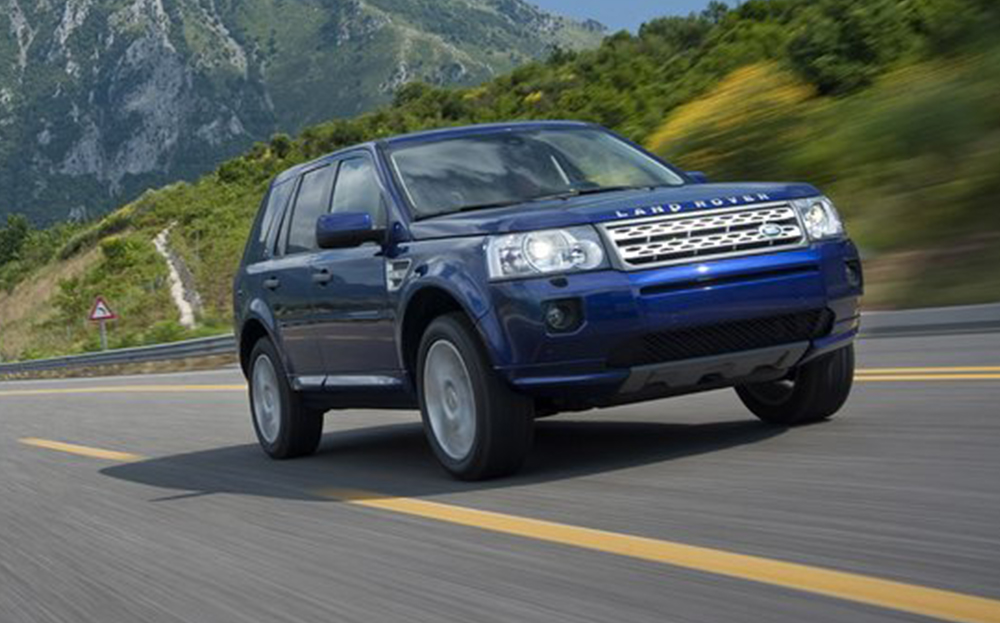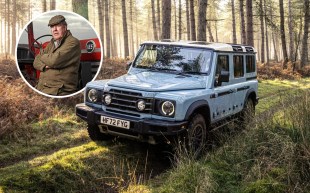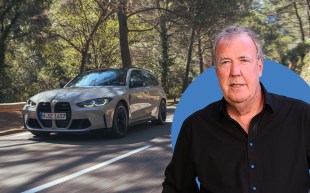The Clarkson review: Land Rover Freelander 2 (2011)
Those yurt dwellers have got it right

THE PHONE rings. It’s a friend who’s just crashed his Jag and is thinking of spending the insurance cash on a new Range Rover. I explain that, all things considered, it’s probably the best car in the world but advise against buying one brand new. First, I say, the initial depreciation can be alarming and second, I am aware the battery on new models goes flat rather too easily. I therefore advise him to buy the last of the old diesels from the second-hand market and am rather surprised by what he says in reply.
He explains that he lives in a part of the world where middle-aged women pour paint on friends if they are caught buying eggs from a battery farm. Come election time, you could be forgiven for thinking as you see the posts in people’s gardens that there is only one party, and it’s not blue, red or yellow. This is north Oxford. This is where the ultimate status symbol is a wicker trolley on the back of your bicycle and where everyone secretly wants to live in a yurt.
Search for and buy a Land Rover Freelander on driving.co.uk
As a result, my friend doesn’t want to buy the old model. He wants the new one because it’s more eco-friendly. Hmmm.
Although he doesn’t realise it, he has a point. It is far more eco-friendly to buy a car built just 50 miles away, even if it is a massive off-roader with a turbocharged V8, than it is to buy a Toyota Prius, the components of which have covered half a million miles before they are nailed into the vague shape of a car and shipped to your front door. However, as eco people are not very bright, I fear my friend’s neighbours may not see it this way.
And I’m absolutely certain that his argument about the new car being more eco-friendly than the old one won’t wash even a tiny bit. In north Oxford a Range Rover of any sort is the devil. I’m regularly told by people there that cars caused the hole in the ozone layer, usually when they are getting something from their trendy old fridge, or applying some deodorant.
The other day, someone even blamed the motor industry for deforestation, even though the only car company still making its cars from wood is Morgan. And I hardly think a cottage industry making 17 units a year in Malvern can be blamed for all the logging in southeast Asia. However, because there is so much claptrap floating about in the ether, a company such as Land Rover must feel like it’s under siege.
And that’s before we get to the rather more important question of fuel consumption. I had a supercharged Range Rover on loan recently and in one week of normal motoring it gulped down £250 worth of fuel. That is catastrophic. And as a result, it must be extremely tempting for Land Rover’s marketing department to do something stupid …
It is, of course, extremely important that I approach every single car that is reviewed on these pages with an open mind and no preconceived ideas of what might lie in store. However, because it’s so much more fun to write about a car that is rubbish than one that is okay, I do occasionally book test drives in cars which are likely to be awful. And that brings me to the new Freelander 2 eD4 — the first car in Land Rover’s long and important history to drag itself into the market using only its front legs.
I can see the logic, of course. Better fuel consumption and more ecoism. But, I’m sorry, the notion of a front-wheel-drive Land Rover is idiotic. It’s as daft as Tarmac launching a new scent. Or Spear & Jackson moving into the lingerie market.
There’s more. Because, when all is said and done, a front-wheel-drive Freelander is simply a very expensive and hard-to-park alternative to, say, a Ford Focus. They have the same number of seats and don’t be fooled into thinking the Land Rover is better able to withstand a barrage of everyday bumps and scrapes. It looks that way thanks to a trick of the stylist’s pen. But it isn’t. And because it’s so tall, your elderly dog will struggle to get into the boot. So you’ll have to pick her up and that will make your hands all dirty.
As a result of all this, I approached the Freelander wearing the cruel smile of an SS officer who’d been given some pliers, a dungeon and a freshly downed Tommy airman to play with. I was going to torture it. Ridicule it. And then rip it to shreds. Unfortunately, it’s a bloody good car.
First of all, the chintzy bits and bobs that ruin the look of the modern Range Rover look rather good on the baby of the Land Rover range. It may only be a hatchback on stilts but it looks expensive. Regal almost. And although it may be hard to load an elderly dog, those stilts do make you feel imperious as you drive along. There are many “soft roaders” on the market these days but none offers such a commanding view as the Freelander.
Inside, many of the features are lifted directly from the Range Rover, which can cost nearly three times as much, so again, you don’t feel like you’re driving around in something from the pick’n’mix counter at the pound store. The car cannot have a five-star rating. However, it does get four. Which, is four more than I was hoping to award.
However, the best thing about this car is the way it drives. The removal of the four-wheel-drive system has resulted in a weight reduction of 75kg and you can feel this as you bumble about. I’m not going to suggest for a moment that it feels sporty, but it does feel agile. The steering in particular is delightful and the ride is sublime. Driving this car is like lying in the bath. It’s brilliant.
Of course, it’s not going to get as far into the woods as the four-wheel-drive version but if you needed to go into the woods, you wouldn’t have bought it in the first place. However, that said, because of the ground clearance, it will get you further in tricky conditions or bad weather than a normal five-seat hatchback.
The only drawback I could find in the whole package was the engine. It has slightly less power but more torque than the previous 2.2-litre Freelander engine and that’s fine. You get quite a big punch when you put your foot down. But while I have no complaints about the performance, this is certainly not one of those cars where passengers say, “Is this really a diesel?” In fact, as they sit there, vibrating, they may ask what you are using instead of fuel. Pebbles? It’s like a powerplate with a tax disc.
It’s so unrefined when it starts that after a while I disengaged the system that cuts the engine when you stop at the lights and starts it again when you put your foot on the clutch. This may save half a thimble full of fuel but it drove me mad. Because of this roughness, the car cannot have a five-star rating. However, it does get four. Which, is four more than I was hoping to award. The fact is, though, that the cost of fuel and the blinkered prejudice found in the nation’s mental yurt-heads has resulted in something that’s pretty damn good.
Search for and buy a Land Rover Freelander on driving.co.uk





